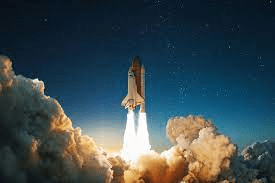
It’s not just rocket fuel propelling America’s first moonshot after a half-century lull. Rivalry with China’s flourishing space program is helping drive NASA’s effort to get back into space in a bigger way, as both nations push to put people back on the moon and establish the first lunar bases.
It’s not just rocket fuel propelling America’s first moonshot after a half-century lull. Rivalry with China’s flourishing space program is helping drive NASA’s effort to get back into space in a bigger way, as both nations push to put people back on the moon and establish the first lunar bases.
American intelligence, military, and political leaders make clear they see a host of strategic challenges to the U.S. in China’s space program, in an echo of the U.S.-Soviet rivalry that prompted the 1960s’ race to the moon. That’s as China is quickly matching U.S. civil and military space accomplishments and notching new ones of its own.
On the military side, the U.S. and China trade accusations of weaponizing space. Senior U.S. defense officials warn that China and Russia are building capabilities to take out the satellite systems that underpin U.S. intelligence, military communications, and early warning networks.
There’s also a civilian side to the space race. The U.S. is wary of China taking the lead in space exploration and commercial exploitation, and pioneering the technological and scientific advances that would put China ahead in power in space and in prestige down on Earth.
“In a decade, the United States has gone from the unquestioned leader in space to merely one of two peers in a competition,” Sen. Jim Inhofe, an Oklahoma Republican, declared this week at a Senate Armed Services hearing. “Everything our military does relies on space.”
At another hearing last year, NASA administrator Bill Nelson brandished an image transmitted by a Chinese rover that had just plunked down on Mars. “The Chinese government … they’re going to be landing humans on the moon” soon, he said. “That should tell us something about our need to get off our duff.”
NASA, the US civilian space agency, is awaiting a new launch date this month or in October for its Artemis 1 uncrewed test moonshot. Technical problems scrubbed the first two launch attempts in recent weeks.
China likewise aims to send astronauts to the moon this decade, as well as establish a robotic research station there. Both the U.S. and China intend to establish bases for intermittent crews on the moon’s south pole after that.
Russia has aligned with China’s moon program, while 21 nations have joined a U.S.-initiated effort meant to bring guidelines and order to the city exploration and development of space.
The parallel efforts come 50 years after U.S. astronauts last pulled shut the doors on an Apollo module and blasted away from the moon, in December 1972.
Some space policy experts bat down talk of a new space race, seeing big differences from John F. Kennedy’s Cold War drive to outdo the Soviet Union’s Sputnik and be the first to get people on the moon. This time, both the U.S. and China see moon programs as a stepping stone in phased programs toward exploring, settling and potentially exploiting the resources and other untapped economic and strategic opportunities offered by the moon, Mars and space at large.
Prasannkumar is a passionate digital marketer and devoted team leader. He loves trying out and sharing the latest knowledge about industry trends, market growth, and keyword analysis with new google and other search engines algorithm. He effectively knows how content feeds into different subsets of the marketing plan and grasps how to develop and share the content assets on the right channels.





